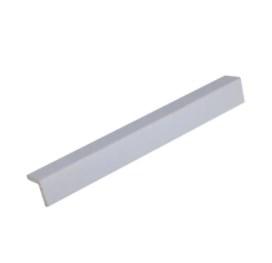PS Mouldings, or Polystyrene Mouldings, are widely used in various industries due to their lightweight, durability, and cost-effectiveness. These versatile materials can be found in packaging, construction, automotive, and consumer products, among others. However, the manufacturing process of PS Mouldings is not widely known. In this article, we will explore the production techniques, materials, and equipment involved in creating these valuable components.
The Manufacturing Process of PS Mouldings
1. Selection of Raw Materials
The primary material used in the production of PS Mouldings is polystyrene, a versatile and widely available plastic. Polystyrene is derived from petroleum, making it a non-renewable resource. However, recent advancements in technology have enabled the use of recycled polystyrene in the manufacturing process, contributing to a more sustainable future.
2. Production of Polystyrene Beads
Once the raw materials have been selected, they are processed to create polystyrene beads, also known as expandable polystyrene (EPS) or Styrofoam. These beads are small, lightweight, and easily moldable, making them the perfect base material for PS Mouldings. The beads are produced by combining polystyrene with a发泡剂 (foaming agent) and water, which creates a combination of solid and gaseous particles.
3. Preparation of Molding Equipment
The next step in the manufacturing process is the preparation of the molding equipment. This typically involves the creation of molds, which are designed to match the desired shape and size of the final product. Molds can be made from various materials, such as aluminum, steel, or even high-quality plastics. The choice of material depends on factors like the complexity of the design, production volume, and required durability.
4. Molding Process
With the molds prepared, the polystyrene beads are then placed into the mold cavities. The molding process can be carried out using various techniques, such as injection molding, compression molding, or vacuum forming. Each method has its advantages and disadvantages, and the choice depends on factors like the desired product quality, production speed, and cost-effectiveness.
During the molding process, the beads are subjected to heat and pressure, causing them to expand and fill the mold cavities. This results in a solid, uniform material that takes the shape of the mold. Once the desired level of expansion is reached, the mold is cooled, allowing the PS Moulding to maintain its shape even after the heat and pressure are removed.
5. Post-Molding Processes
After the molding process, the PS Moulding is removed from the mold and undergoes various post-molding processes. These may include trimming,打磨 (grinding), or painting to achieve the desired finish and dimensions. Additionally, the PS Moulding may be assembled with other components, such as hardware or adhesives, to create a complete product.
6. Quality Control and Inspection
Throughout the manufacturing process, quality control measures are implemented to ensure that the final product meets the required specifications and standards. This may involve visual inspections, dimensional measurements, or testing for strength and durability. Any PS Mouldings that do not meet the required standards are discarded or reworked to ensure customer satisfaction.
The manufacturing process of PS Mouldings is a complex and intricate procedure that involves several stages, from the selection of raw materials to the final product inspection. By understanding the techniques and technology involved in creating these versatile components, manufacturers can optimize their production methods, reduce costs, and improve product quality. As the demand for PS Mouldings continues to grow, manufacturers need to stay informed about the latest advancements and best practices in the industry, ensuring a sustainable and efficient production process for years to come.
